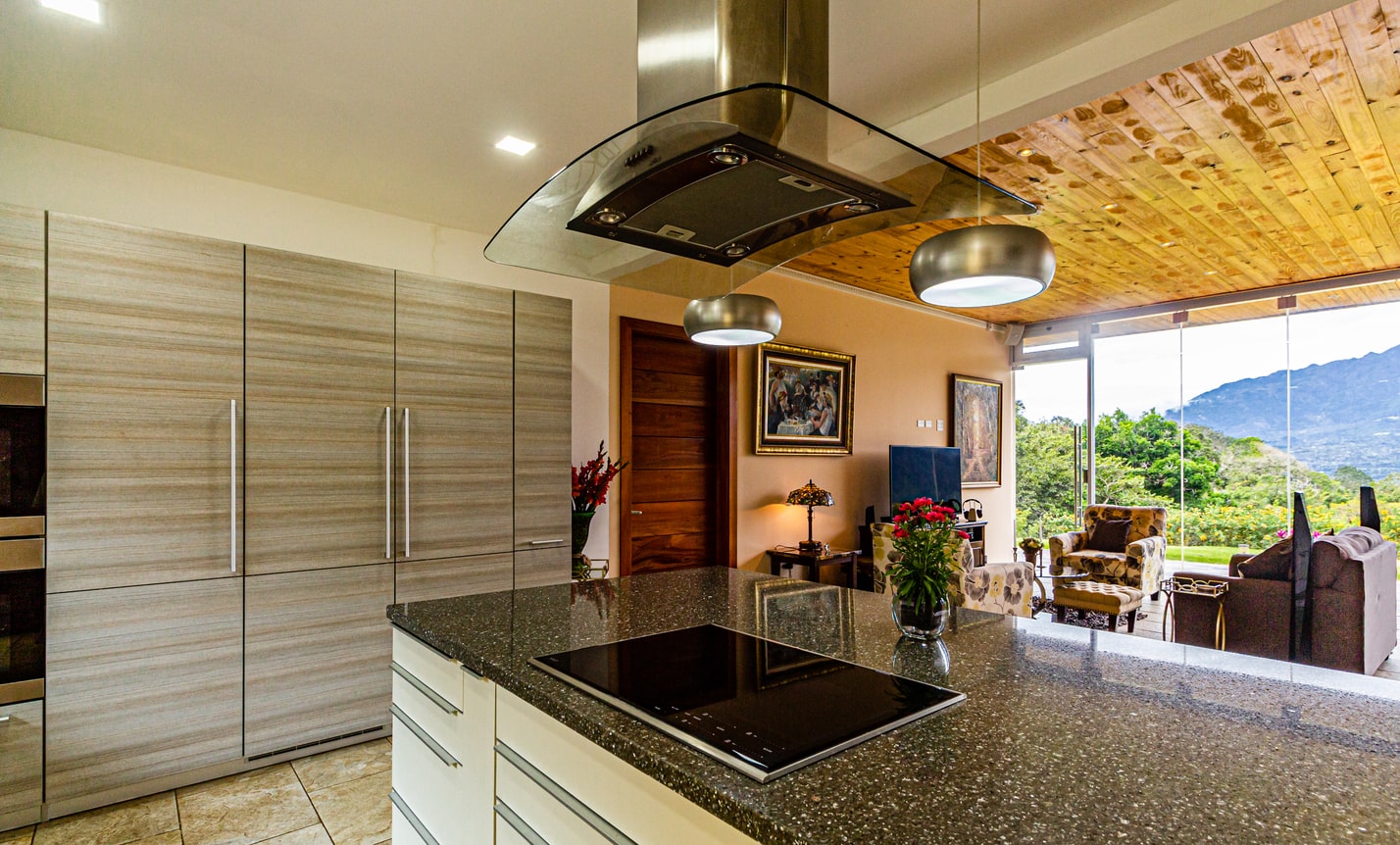For some, cooking is one of the simple joys in life that is just so rewarding.
There’s just something about preparing a meal from scratch, putting on a medley of fresh ingredients, and mixing up spices to create a work of art that smells, looks, and tastes so good.
Despite all the rewarding aspects of cooking, there are some real issues that home-chefs have to deal with that may cause a particular amount of inconvenience.
When you cook anything on a stove, your ingredients and oil you use start breaking down when exposed to the high heat.
This breaking down process releases all sorts of airborne grease, moisture, smoke, and cooking odors that could make your kitchen smell a little funky, especially if you’re a regular user of exotic and aromatic spices when making your meals.
I believe range hoods are an essential part of the kitchen. Without it, The smell of food, smoke, and oil vapor will release into your home. When I started researching if range hoods are necessary for kitchens, to my surprise, I found the following information. Residential range hoods are not a required fixture in most building codes. Codes may vary from state to state, so contact your fire marshals office or building department where you live to be sure of your local regulations.
Kitchen range hoods 101
The modern kitchen has a solution to the problem of lingering odors and sticky cabinets- and that is the range hood. They are built to collect airborne particles that get released when the stove is being used.
Through a robust and efficient suction mechanism, everything from heat and smoke to unpleasant odors is sent through the channels of the range hood and gets sent to the outside, or in some cases, gets filtered multiple times and recirculated back into the kitchen air that you breathe.
They are always located right above the stovetop work area and can come in a variety of designs and specifications depending on the kind of stovetop and space you have in your kitchen.
Benefits of range hoods
Range hoods are useful things to have in the kitchen. If you’re still in need of a little more convincing, below is a list of some of the benefits of having a range hood installed in the kitchen.
1. Helps you cook more comfortably
The process of cooking requires you to look into your pots and pans as they’re bubbling or sizzling away to ensure that your food is perfectly done all around.
And as anyone who’s ever worked in a kitchen before can probably attest to – without a range hood to vent out all the steam, heat, odors, and smoke from the food being cooked, you’re in for a pretty uncomfortable time.
Range hoods regulate the air that you breathe while cooking and ensure that the air quality in your kitchen is kept at optimal conditions from when you first fire up the stove to when you finally serve your food.
2. Keeps your kitchen clean
Kitchens get dirty – they’re meant to, there’s no doubt about that. But they’re also meant to be cleaned up every time you use it for cooking. And we all know how much of a chore cleaning up the kitchen can be.
Smoke, moisture, and airborne grease released during cooking have to find a place to land somewhere – and in most cases, the cabinets, countertops, and floors of your kitchen are prime real estate for them.
This results in a sticky film created on your kitchen’s surfaces, which attracts bacteria and mold – two things that should be kept as far away from fresh food as possible.
By sucking the bad stuff out of your cooking while it is being released, range hoods help you avoid the sticky, filming countertop problem altogether – and you’d be doing yourself a favor by reducing the amount of cleanup duty you have to do after you finish cooking!
If you enjoy cooking Indian and Chinese cuisine as I do, check out the article I wrote on how to find the right range hood to control strong cooking smells.
3. Improves the design of your kitchen
Modern variants of range hoods come in all kinds of designs, colors, shapes, and sizes.
From the minimalist range hoods to the all-out sleek and shiny silver professional kitchen vibes, once you install a range hood to your gas stove setup, it becomes a part of the overall aesthetic of your kitchen design.
Part of the excitement is choosing the kind of range hood that accentuates the highlights and color scheme of the room – after all, who doesn’t like making a wonderful meal in a beautiful kitchen?
Most range hoods also provide elegant lighting solutions for when you cook, with a choice of bulb types and lighting intensity to ensure that you’ll always know if your food is done or it needs another minute sizzling on the pan.
Do I need a range hood for gas, electric, or induction stoves?
Some people are often confused about whether they need a range hood for specific types of stove cooktops.
Regardless if you own a gas, electric, or induction stove, most residential building codes do not list range hoods as a mandatory fixture in homes. Building codes do vary from state to state, so to be sure, contact your local fire marshals office or building department.
Gas stoves heat up faster than traditional electric stoves. Although building codes might not require you to use a range hood, I highly recommend whether you’re using one with gas, electric, or induction stoves.
Installation of a kitchen range hood
If you’re installing a brand new range hood over a gas stove that didn’t use to have one before, the process can involve lots of drilling through the wall behind your stove, creating brackets for the unit, and fitting in the wiring and ductwork for the ventilation system.
Generally, the complexity of installing a range hood depends on the type of wall that needs to be drilled – thin walls are easy, while thick masonry walls take a lot longer to go through.
It’s best to always consult a professional company that has lots of experience installing a brand new range hood in your home.
Types of range hoods
There are variety of range hoods you can choose from for your kitchen.
● Wall-mounted
This is by far the most common type of range hood, installed on the wall itself behind your gas stove. It normally comes in a chimney shape.
● Island-mounted
For gas stoves that are situated on a kitchen island in the middle of the room – this is the best option. It really adds more attention to the centerpiece of your kitchen and makes it look so professional.
● Under Cabinet
Ideal for those who have their stoves underneath kitchen cabinets. The range hood is fitted inconspicuously underneath the bottom of the cabinet to ensure maximum suction power while taking up minimum space.
● Microwave range hood
Standard microwaves need a flat surface to sit on. These hybrids microwaves range hood combos are ideal if you’re looking to save a bit of countertop space.
Final thoughts
If you haven’t got one already, it’s safe to say that the benefits that a range hood provides to your cooking experience truly justify the (often) high initial cost you spend to install it.
But once you see your brand new range hood in your kitchen in all its shiny glory, and you find yourself with cleaner air, less cleaning to be done, and tastier food – trust us, you’ll never look back.








